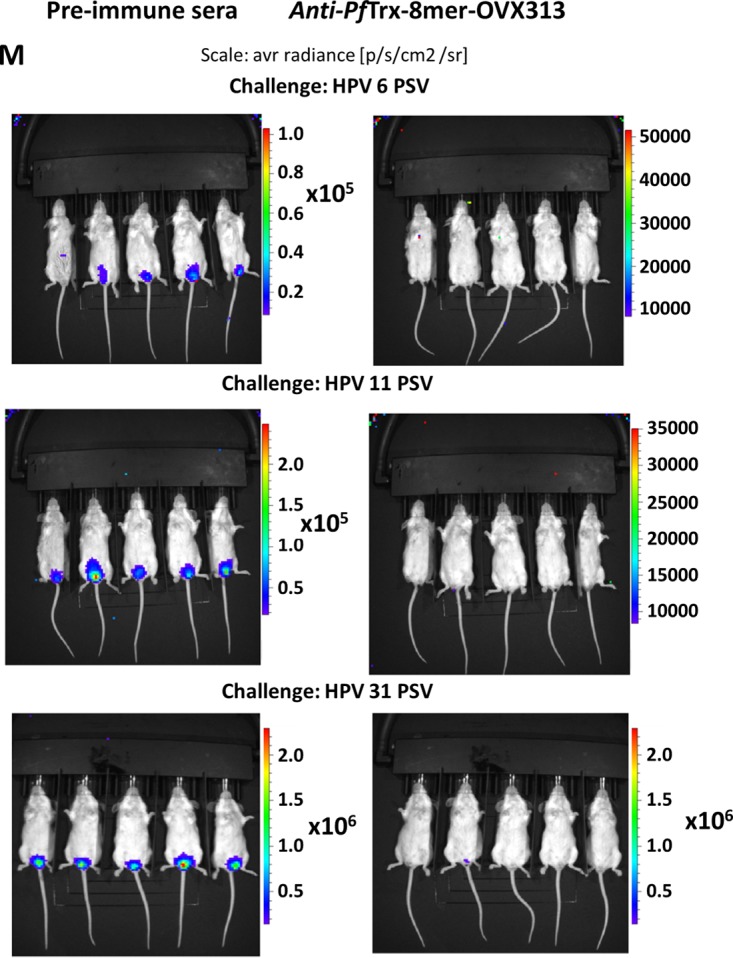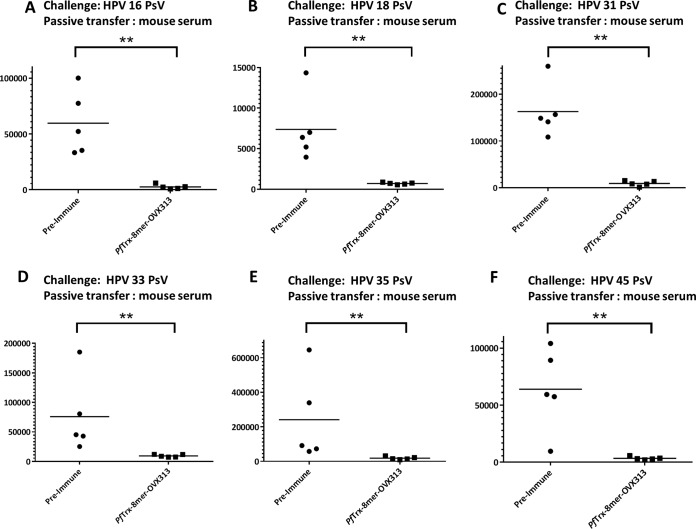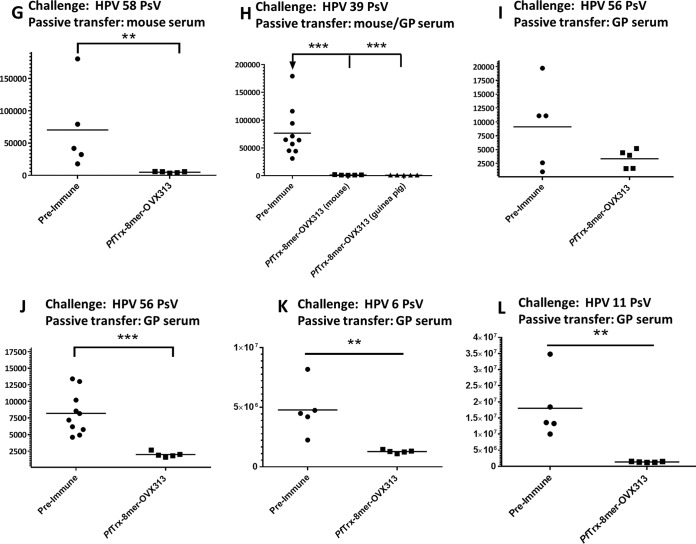FIG 7.

In vivo protection afforded by anti-PfTrx–8-mer–OVX313 sera compared with sera from nonimmunized animals. Sera from either 10 mice (A to I) or 2 guinea pigs (GP) (J) immunized with the PfTrx–8-mer–OVX313 antigen were pooled and passively transferred into naive mice. Recipient animals were then transduced with HPV16 (A), HPV18 (B), HPV31 (C), HPV33 (D), HPV35 (E), HPV45 (F), HPV58 (G), HPV39 (H), HPV56 (I and J), HPV6 (K), and HPV11 (L) pseudovirions. The y axis displays the average radiance measured as photons per second per square centimeter per steradian. The broad protection afforded by PfTrx–8-mer–OVX313-elicited antibodies compared with preimmune sera is apparent in panels A to I; representative images showing the magnitude of vaginal infection by HPV6, -11, and -31 PsVs are shown in panel M. The colors (scale shown on the right) indicate the intensity of luciferase expression; an ROI analysis for average radiance (photons per second per square centimeter per steradian) was performed with Living Image 2.50.1 software. Note that due to the different in vivo transduction activities of the various HPV pseudovirion types, different scales were used. A P value of ≤0.05 was considered significant. *, P value < 0.05; **, P value < 0.01; ***, P value < 0.001.


